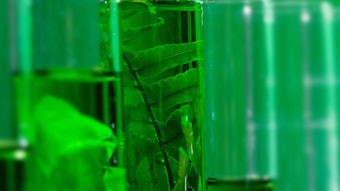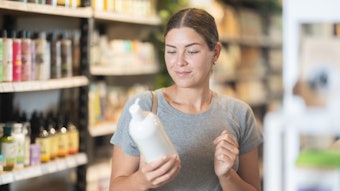Editor's note: This article originally ran in the July 2013 issue of Skin Inc. magazine. All rights reserved.
Once a straightforward and rarely questioned addition to skin care formulations, preservatives have become mired in controversy in recent years. With the rise of the organic movement in the 1990s, consumers and special interest groups began more closely evaluating the ingredient lists of beauty and personal care products and, in many cases, became concerned about what they saw. The spread of both information and misinformation followed, with some preservatives accused of being potentially harmful to the public’s health, or worse—carcinogenic. Thus, consumers have demanded that product manufacturers halt the use of certain preservatives or simply stop using them altogether. But as the list of preservatives scorned by the public continues to grow, the beauty and skin care industries are left with fewer choices to protect product formulations. The question is, “Are we better off with the alternatives?”
Developments Affecting Preservative Use
Of all the ingredients in a skin care formulation, some would argue that preservatives are the most important. After all, what good are the most advanced active ingredients if they’re suspended in formulations that could harm a person’s health? Almost all skin care products contain a certain amount of water, a fact that puts these products at risk of contamination by bacteria, mold, fungus and other microbes. Preservatives, which have been used in personal care products since the 1930s, provide protection against these foreign invaders, while effectively extending product shelf life—a necessity in today’s world where products are shipped, warehoused and left to sit on shelves until they are purchased. Today, the three most important classes of preservatives include parabens, formaldehyde-releasers and isothiazolinones.1
Concern surrounding preservatives, particularly parabens, began growing in 1998 when a study showed that parabens are weakly estrogenic; that is, they mimic the effects of natural estrogen in the body.2 That concern reached an all-time high following the 2004 release of a now well-known study by Philippa Darbre, MD, of the University of Reading, which showed that parabenlike substances were found in breast cancer tissue.3 The public quickly jumped to the assumption that parabens may be associated with the development of breast cancer. Considered to be the safest and most well-tolerated preservatives used in beauty and personal care products, parabens were suddenly almost blacklisted.4
However, only part of the story was told. Parabens were found to be 10,000- to 100,000–fold less potent than estradiol4, a form of estrogen, while a review of available data showed that at current usage levels: “... it is biologically implausible that parabens could increase the risk of any estrogen-mediated endpoint, including effects on the male reproductive tract or breast cancer.”5 Furthermore, the U.S. Food and Drug Administration (FDA) pointed out that the Darbre study “... left several questions unanswered. For example, the study did not show that parabens cause cancer, or that they are harmful in any way, and the study did not look at possible paraben levels in normal tissue.”6
In October 2011, Denmark, as a precautionary measure, banned the use of parabens in personal care products for children under the age of three. This led to a review of parabens by the European Commission’s Scientific Committee on Consumer Safety (SCCS), which found that, “... excluding specific products for the nappy (diaper) area, the SCCS considers there is no safety concern to children (any age group).”7 As a result, the U.S. cosmetics industry officially asked the Cosmetic Ingredient Review (CIR)—an independent panel of scientific and medical experts that previously evaluated parabens and found them to be safe—to revisit their safety. In December 2011, the CIR once again confirmed that parabens “... are safe as cosmetic ingredients.”8
New research by Darbre continues to raise more questions than answers about the effects of parabens. Her latest study demonstrates that parabens can induce the growth of breast cancer cells.9 Although any mention of cancer in relation to a skin care ingredient is alarming, the fact is that, yet again, this study fails to show that parabens cause cancer. In fact, certain herbs, such as dong quai and ginseng, have been shown to induce the growth of cancer cells.10 Thus, it is obvious that further research is needed.
Other popular preservatives have also been criticized, albeit to a lesser extent than parabens. Formaldehyde-releasers, such as quaternium-15, DMDM hydantoin, imidazolidinyl urea and diazolidinyl urea, are used in approximately 20% of cosmetics and personal care products.11 During a product’s shelf life, these preservatives release miniscule amounts of methylene glycol, the alcohol form of formaldehyde, which is a gas. Given that formaldehyde is considered carcinogenic by the World Health Organization’s International Agency for Research on Cancer (IARC)12, the relationship—albeit a very distant one—between formaldehyde-releasers and formaldehyde has made the public jumpy. But adding to their concern is the finding that when certain formaldehyde-releasers, such as bronopol (2–bromo–2-nitropropane–1,3–diol), are combined in a formulation with amines, such as Cocamide MEA or DEA, nitrosamines can be inadvertently created.13 Nitrosamines are carcinogenic substances with the ability to penetrate the skin.
The reality is that reputable skin care companies that choose to preserve their products with formaldehyde–releasers do so using the smallest necessary concentrations, the result of which is the release of minute levels of formaldehyde. What’s more, formaldehyde is carcinogenic when inhaled in large doses—a scenario that doesn’t apply to skin care products or cosmetics. Finally, cosmetic product developers and chemists understand the risk of combining formaldehyde-releasers with amines and, therefore, avoid including both ingredients in any formulation.
Of the three main preservative categories, just isothiazolinones remain. Although this preservative category—which includes methylchloroisothiazolinone and methylisothiazolinone—is considered noncarcinogenic, a segment of the public has demanded isothiazolinone–free skin care products because of the ingredient’s status as “one of the most frequent causes of preservative contact allergy.”14
Considering the Alternatives
Given the concerns surrounding traditional preservatives, skin care product manufacturers have looked to alternative ingredients. This has given rise to synthetic preservatives, such as phenoxyethanol, which has actually encountered its own share of controversy, as well as natural preservative blends that utilize essential oils, organic acids and plant extracts. Phenoxyethanol is a synthetic preservative that is often used as a replacement for parabens in cosmetic products. While it is generally safe for use, some individuals may experience side effects, including dermatitis or a worsening of eczema. While some studies have shown that, in high doses, phenoxyethanol can cause depression of the central nervous system, there is no conclusive research regarding this statement. The amount used in cosmetic ingredients, including skin care, is just a very small fraction of that used in the published research. Therefore, for most individuals, the potential for risk from phenoxyethanol exposure is minimal.
Although the industry remains optimistic about the opportunities afforded by these emerging ingredients, there are challenges associated with their use.
- Newer preservatives do not have an extended track record. Therefore, it cannot be assumed that they are safe. Parabens, for example, have been used for more than 80 years and have caused minimal irritation. It is not yet known what adverse effects may result after prolonged use of newer preservatives.
- Alternative preservatives that offer a similar level of broad-spectrum protection have yet to be found. Traditional preservatives are capable of defending a formulation against a range of microorganisms and are quite adaptable to a variety of formulation conditions. Meanwhile, newer preservatives must often be bundled together in greater numbers to offer a similar level of protection and can be quite finicky about the types of formulations in which they are effective. Additionally, natural substances, such as essential oils and organic acids, must be added in high concentrations before they will begin preserving a product. This can cause the product to be irritating to many consumers.
- The use of alternative preservatives may drive up product cost. While traditional preservatives are inexpensive to produce, alternatives—especially those that are natural—are far more costly to produce. What’s more, it’s difficult to consistently maintain the quality and characteristics of natural preservatives from batch to batch.
Continued Exploration
The current state of skin care preservation demonstrates that research must continue exploring the safety of traditional preservatives, just as, simultaneously, beauty product developers and chemists must continue searching for efficacious and affordable alternatives. Meanwhile, those employed in the skin care industry must not sit idly by. Rather, your responsibility is to continue monitoring the developments on these fronts so that the safety and satisfaction of your customers can be ensured.
References
- D Sasseville, Hypersensitivity to preservatives, Dermatol Ther 17 251–263 (2004)
- EJ Routledge, J Parker, J Odum, et al, Some alkyl hydroxl benzoate preservatives (parabens) are estrogenic, Toxicol Appl Pharmocol 153 1 12–19 (Nov 1998)
- PC Darbre, A Alijarrah, WR Miller, NG Coldham, MJ Sauer and GS Pope, Concentrations of parabens in human breast tumours, J Appl Toxicol 24 5–13 (2004)
- MG Kirchhof and GC de Gannes, The health controversies of parabens, Skin Therapy Lett 18 2 5–7 (Feb 2013)
- R Golden, J Gandy and G Vollmer, A review of the endocrine activity of parabens and implications for potential risks to human health, Crit Rev Toxicol 35 5 435–458 (Jun 2005)
- www.fda.gov/cosmetics/productandingredientsafety/selectedcosmeticingredients/ucm128042.htm (Accessed March 26, 2013)
- ec.europa.eu/health/scientific_committees/consumer_safety/docs/sccs_o_069.pdf (Accessed March 26, 2013)
- Final amended report on the safety assessment of Methylparaben, Ethylparaben, Propylparaben, Isopropylparaben, Butylparaben, Isobutylparaben, and Benzylparaben as used in cosmetic products, Int J Toxicol 27 Suppl 4 1–82 (2008)
- S Khanna and PD Darbre, Parabens enable suspension growth of MDF-10A immortalized, non-transformed human breast epithelial cells, J Appl Toxicol 33 5 378–382 (May 2013)
- P Amato, S Christoph and P Mellon, Estrogenic activity of herbs commonly used as remedies for menopausal symptoms, Menopause, 9 2 145–150 (Mar/Apr 2002)
- AC De Groot, IR White, MA Flyvholm, et al., Formaldehyde-releasers in cosmetics: relationship to formaldehyde contact allergy, Contact Dermatitis 62 2–17 (2010)
- V Cogliano, Y Grosse, R Baan, et al., Advice on formaldehyde and glycol ethers, Lancet Oncol 5 9 528 (Sep 2004)
- ec.europa.eu/health/scientific_committees/consumer_safety/docs/sccs_o_090.pdf (Accessed on March 26, 2013)
- MD Lundov, T Krongaard, TL Menné and JD Johansen, Methylisothiazolinone contact allergy: a review, Br J Dermatol 165 6 1178–1182 (Dec 2011)
Ahmed Abdullah, MD, is author of the book Simple Skincare, Beautiful Skin: A Back-to-Basics Approach (Greenleaf Book Group Press, 2012), founder of Lexli International, Inc., and formulator of the Lexli line of professional skin care products. A board-certified plastic/reconstructive surgeon and a leading aloe researcher, Abdullah is an associate clinical professor in plastic surgery at the University of North Dakota School of Medicine and a member of the International Aloe Science Council (IASC).










